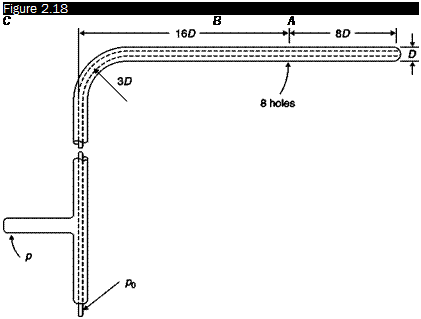Pitot-static tube
A Pitot tube and a static tube can be combined into a single probe, called a Pitot-static tube; if the flow is incompressible the dynamic pressure and hence the speed can be directly measured from Equation (2.3).
The outline of a NASA standard probe is given in Figure 2.18: this probe consists of a Pitot tube inserted into a pipe with a hemispherical head in which static holes are positioned so that, for all sufficiently high Reynolds numbers, pressure disturbances induced by the head and those induced by the stem perpendicular to the axis of the pipe are below 0.5% and balanced. The performance of the probe at varying angles of incidence is shown in Figure 2.19.
Pitot-static tubes can be used without appreciable scale effects in the same range of Reynolds numbers of static tubes. In general, however, the head of the tube is quite blunt, and the effects of compressibility discussed
 |
Standard Pitot-static tube
above usually produce an error in static pressure at Mach numbers of the stream appreciably lower than 1. For this reason Pitot-static tubes are often not appropriate at high speeds where separate Pitot tubes and static tubes are preferred.











